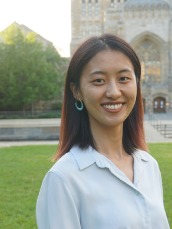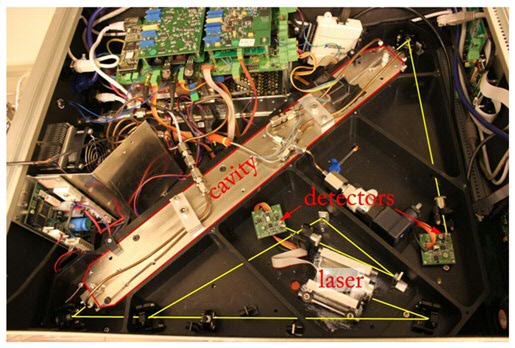Optimizing the use of CRDS techniques for stable isotope measurements in water, with biomedical and earth science applications | Xing Wang

Field | Discipline
Expertise
Summary of PhD project:
Analysis of the stable isotope ratios of hydrogen and oxygen in water is widely applied in fields such as atmospheric research, hydrology, paleoclimatology and biology. The conventional way to measure isotope ratios is using Isotope Ratio Mass Spectrometry (IRMS). However, IRMS is incompatible with water, so careful sample pre-treatment is necessary to transfer the hydrogen and oxygen isotopic signatures to a suitable molecule. Since the development of continuous flow IRMS, many automated preparation systems have been widely used. Still, using IRMS to analyze water isotope is labor-intensive, costly and technically demanding. The IRMS itself is also expensive, and its size, weight and power usage make it less suitable for use in the field.
Therefore, laser absorption spectroscopy in water isotope measurements has attracted much attention to be the alternative of IMRS to achieve quick, accurate and in principle even continuous measurements. The Centre for Isotope Research (CIO) was actually the first to develop such a laser-based system. Since then, many laser-based instruments have been developed and utilized in isotope measurements fields, such as cavity ring-down spectrometry (CRDS), off-axis integrated cavity output spectroscopy (OA-ICOS) and optical feedback cavity enhanced absorption laser spectrometer (OF-CEAS).
The main objective of this project is to develop further the prototype OF-CEAS infrared laser spectrometer such that it can achieve accurate, measurements of water isotope (δ2H and δ18O, and also δ17O) in both the natural range, and for enriched waters in use for DLW studies. The measurement results obtained by the analyzer will be compared with the results using IRMS, which will verify the accuracy.
One of the applications of the spectrometer is focused on energy expenditure measurements of animals by using DLW. The body samples can be urine, blood and saliva. For validation studies of the method, an independent other measurement of energy expenditure will be used, such as indirect calorimetry. Our group is highly experienced in analyses for DLW purposes. The OF-CEAS instrument must be developed to become a fruitful alternative analysis tool for such measurements. This includes sample pretreatment, for which an effective on-line micro-distillation system will be developed.
The other application of the spectrometer will be in precipitation. Groningen has been a GNIP station ever since the 1960's; the plan is to extend the services to the GNIP to several areas on the globe that are severely undersampled. Especially arid regions in the world deserve more attention, as their water balance and changes thereof are crucial to the regional environment. Isotope measurements can provide crucial information, but are at the same time difficult to achieve.
Supervision by
Supervisors: Prof. dr. H.A.J. (Harro) Meijer (Centre for Isotope Research, ESRIG/RUG)
Prof. dr. ir. J. (Hans) van der Plicht (Centre for Isotope Research, ESRIG/RUG)

